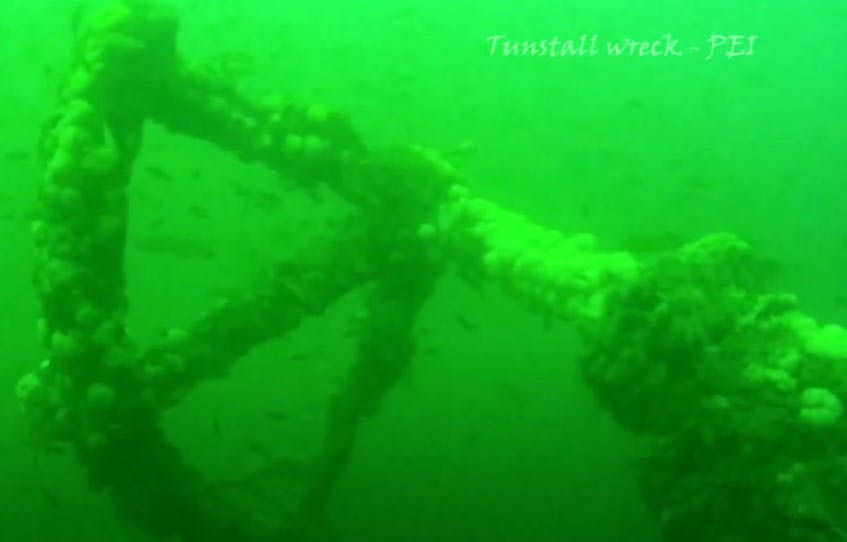For anyone interested in some more details about the history of the ship and its sinking, here’s a write-up I (Kelly Campbell) did on the ship a few years ago.
The Story of the Tunstall
The story of the shipwreck you’re about to descend upon 70 feet below the surface started back over 130 years ago across the Atlantic in the shipyards of Sunderland, England. It was September of 1879 when yard number 99 was completed in the Short Brothers shipping yard, an iron hull ship with the name “Tunstall”. With the official registration number 81461, the 230 foot long, 32 feet wide, 1247 gross tonnes was built for owner J.S. Barwick and Master J.B Mackie.
The ship carried passengers until it was sold in 1882 to the Black Diamond Steamship Company and began to haul coal out of Montreal, Quebec. The beginning of the end of the Tunstall began on Saturday May 3rd, 1884. The Tunstall; with Captain Mackie behind the wheel with his crew of 20 men; left the port of Pictou, Nova Scotia heading to Montreal, Quebec with a load of coal. The sea ice was heavy in 1884 and the Tunstall tried to pass East Point, PEI that night when it was turned back by the sea ice. The Tunstall turned around and made its way through the Northumberland Strait, making it was far as Cape Traverse, New Brunswick on Sunday before it again was stopped by the ice. Captain J.B. Mackie then turned back towards the Gulf of St. Lawrence in its attempt to get to Montreal
They finally reached ice free seas around Souris, PEI on Thursday. After it rounded East Point and made it as far as Cape Turner, the weather began to change on Saturday. “It was a dirty day, blowing thick and hard” Captain Mackie told The Daily Patriot shortly after the Tunstall’s sinking. They laid off Little Rustico on Saturday night into Sunday May 11th 1884 when the ice closed in rapidly on the Tunstall. As Captain Mackie told the newspaper “At 10am, it was impossible to move the engines the ship was so tightly packed in ice. At 11am, the final crash came, a hull plate on the starboard side had come loose and the ship was quickly filling with water”. The cargo was discharged and crews tried to patch the holes. Captain Mackie determined that once the ice let go of the ship could not stay afloat and ordered the boats to be lowered onto the ice and hauled away from it.
The crew watched from the ice as the Tunstall slipped bow first below the water around 4 o’clock that afternoon. The crew spent the night on the ice before making their way across the ice towards the St. Peter’s lighthouse and made land by 10am. Three crewman were separated from the main party when they made an earlier break for land spent an extra night on the ice, where the only casualties of the sinking, two pigs were butchered and cooked to feed the three men.

They were rescued the next morning from the ice. The Tunstall spent the next 100 years sitting on the bottom of the ocean, forgotten until a local captain Ronnie Campbell had snagged some fishing gear off of Covehead. Campbell called upon a local diver to see what was snagging his gear and it didn’t take too long to discover not only the cause of the snagged gear, but the name of the shipwreck laying on the bottom. The ship’s bell was almost instantly found on the first dive and bore the markings “Tunstall Sunderland 1879”. Other artifacts including the ship’s wheel were also recovered on follow-up trips to the wreck.
The Tunstall was re-born, as a popular dive site on PEI’s North Shore since its discovery in the 1980’s. A copy of the newspaper story hangs on the wall of Diver’s Quarters if you want to check it out next time you’re in.
Thanks to Kelly Campbell for his contribution of this article.
Follow Kelly’s Dive Adventures on Facebook






